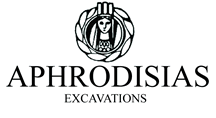Early exploration

The site has been known to European travellers since the 18th century, when several expeditions came to record the wealth of inscriptions built into the city walls. First and most important was William Sherard in 1705. The city and its monuments were drawn by an expedition sponsored by the London-based Society of Dilettanti in 1812 and published in Antiquities of Ionia III (1840). A French expedition led by C.-F. M. Texier came in 1835, recorded some of the main monuments, and published them in volume III of Texier’s Description de l’Asie Mineure faite par ordre du Gouvernement Français, de 1833 à 1837 (Paris, 1839-49). A French team directed by Paul Gaudin and Gustave Mendel excavated at the site in 1904 and 1905 in the temple of Aphrodite and especially in the Hadrianic Baths, where a number of well-preserved portrait statues were found. The finds from 1904 were removed and sold in Izmir and in Europe. The finds from Mendel’s campaign in 1905 were brought to the Istanbul Archaeological Museums under the leadership of Osman Hamdi Bey. Another French team came again for one campaign in 1913 under André Boulanger, but it was interrupted by the convulsion of World War I. An Italian expedition directed by G. Jacopi came for one campaign in 1937 and excavated the nort stoa in the Urban Park, called then the ‘Portico of Tiberius’, together with the many blocks of its important mask-and-garland friezes.

Kenan Erim
The first systematic and continuous excavations at the site were begun in 1961 under the aegis of New York University, and were directed by the late Kenan Erim until his death in 1990. These excavations concentrated on the city’s central monuments, with spectacular results. Major areas of excavation included: the Temple of Aphrodite, the Theatre, the Urban Park, the Council House, the Basilica, and the Sebasteion. The most important finds from these excavations are on display in the Aphrodisias Museum, built on the site in 1979. Since 1990, major new fieldwork of the New York University team has investigated the city’s urban development and discovered the rectangular grid on which the late hellenistic city was laid out. Research has also concentrated on documentation, conservation, publication, and museum display of important finds. A new museum hall for the sculptures of the Sebasteion was opened in 2008.






